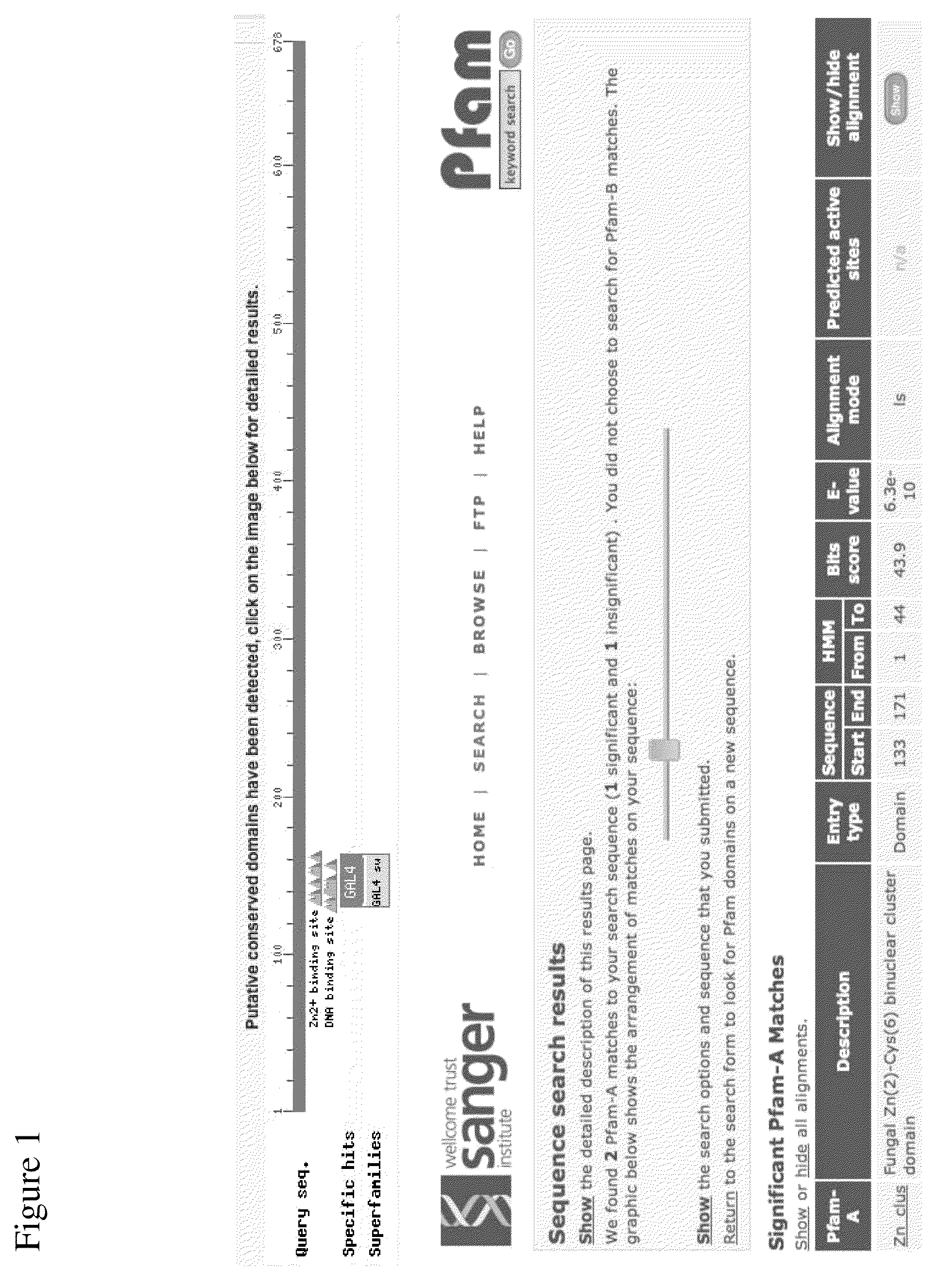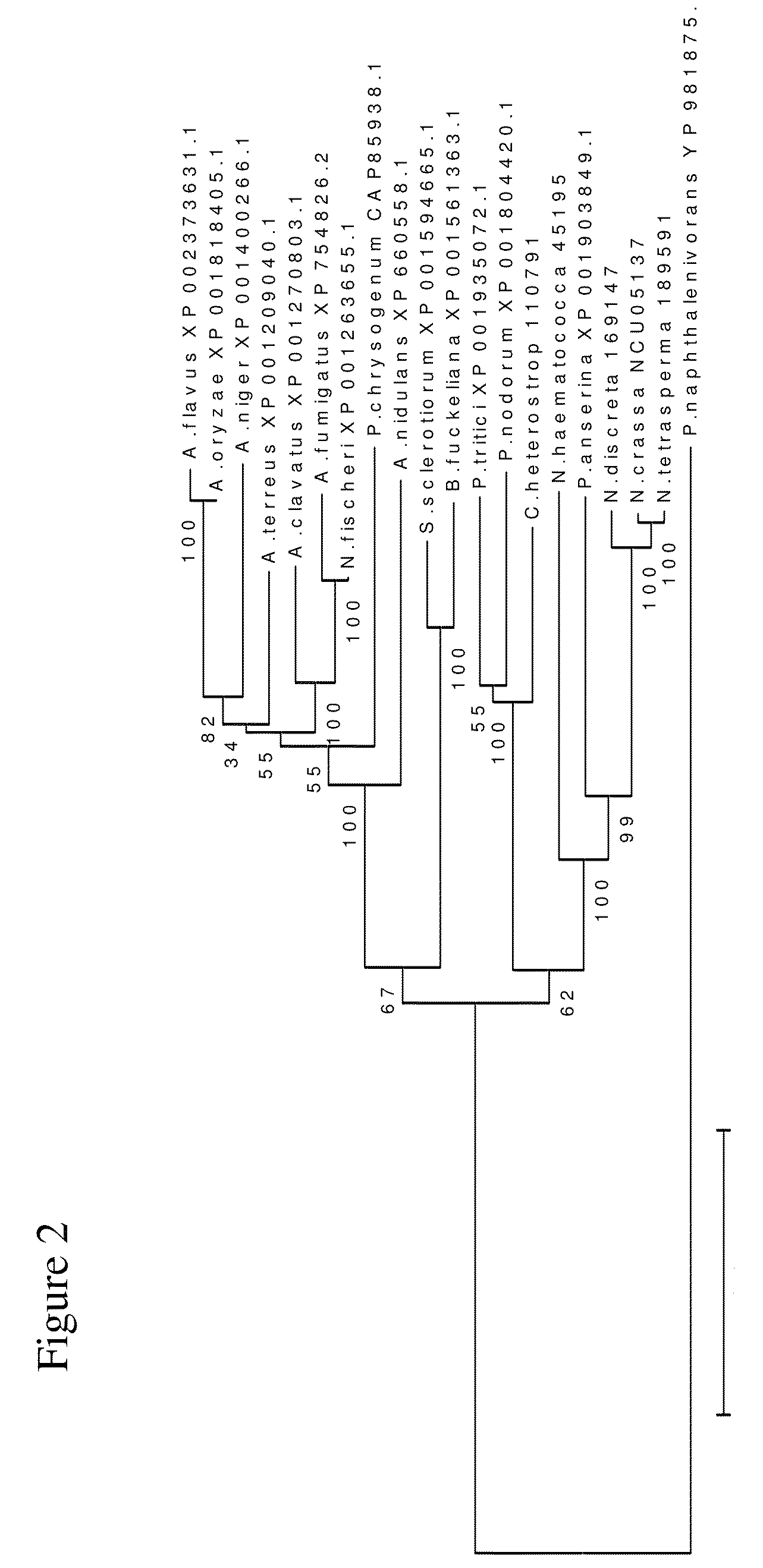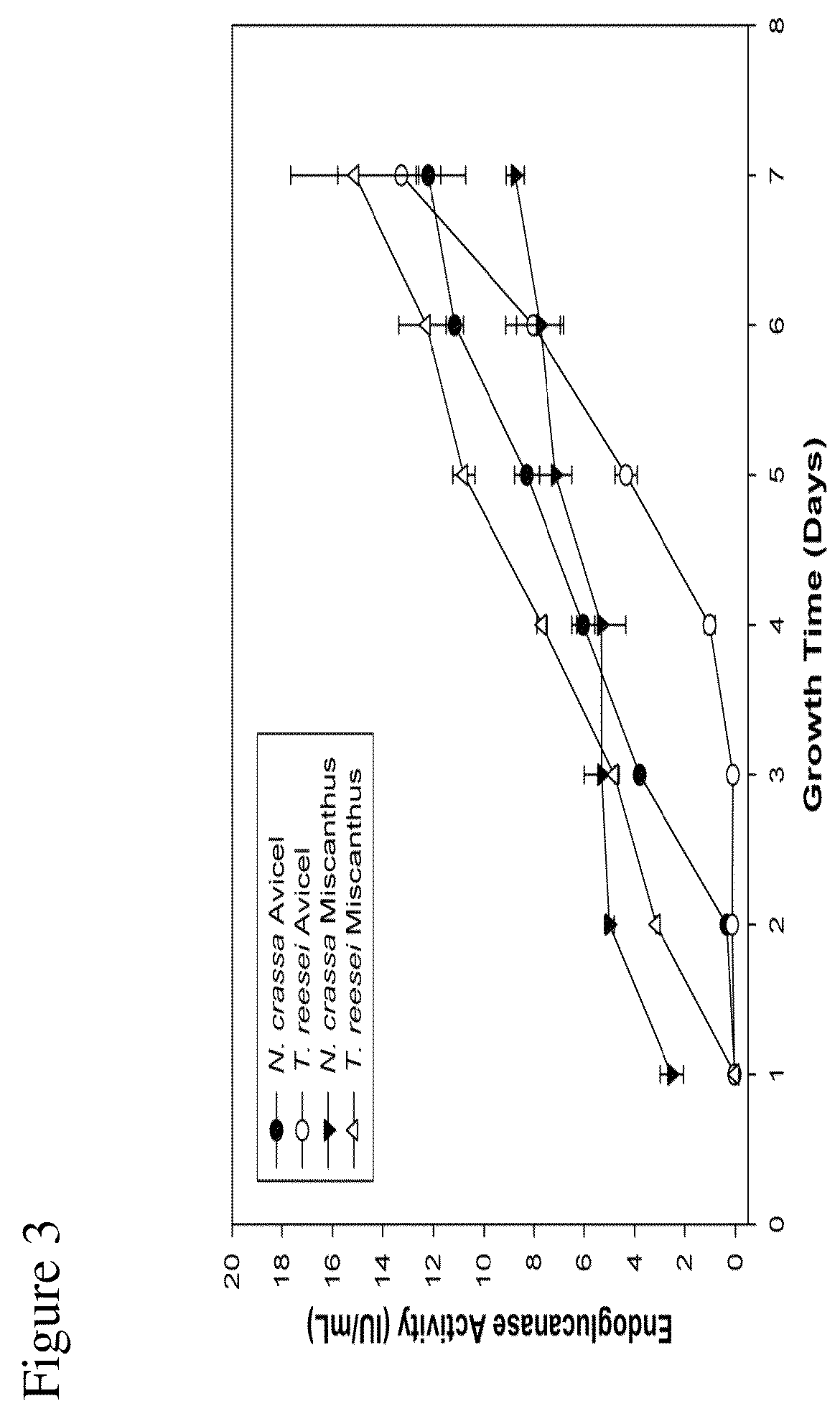Methods and compositions for improving sugar transport, mixed sugar fermentation, and production of biofuels
a technology of mixed sugar fermentation and sugar transport, which is applied in the direction of biofuels, animal/human proteins, peptides, etc., can solve the problems of limited efficiency in conversion of pentose sugar into biofuels, less well studied, and wild type i>s. cerevisiae /i>cannot utilize pentose sugars, etc., to and increase the synthesis of hydrocarbons
- Summary
- Abstract
- Description
- Claims
- Application Information
AI Technical Summary
Benefits of technology
Problems solved by technology
Method used
Image
Examples
example 1
Transcriptome Analysis of N. crassa grown on Miscanthus and Avicel
[0294]In this example, the expression profile of the N. crassa genome was examined during growth on Miscanthus or Avicel. Growth and cellulase activity of N. crassa (FGSC 2489) cultured on Vogel's minimal media with crystalline cellulose (Avicel) as the sole carbon source was similar to that of T. reesei (QM9414) (FIG. 3); N. crassa completely degraded Avicel in approximately 4 days. N. crassa also grew rapidly on ground Miscanthus stems, suggesting functional cellulase and hemicellulase degradative capacity. To determine the transcriptome associated with plant cell wall deconstruction in N. crassa, we used full genome microarrays (Kasuga and Glass 2008; Tian et al., 2007; Kasuga et al., 2005) to monitor gene expression profiles during growth of N. crassa on ground Miscanthus stems. RNA was sampled after 16 hrs of growth on sucrose and compared to RNA isolated from N. crassa grown on Miscanthus medium at 16 and 40 hrs...
example 2
Secretome Analysis of N. crassa Grown on Miscanthus and Avicel
[0299]Lignocellulose degradation by fungi takes place extracellularly and requires the secretion of proteins associated with depolymerization of cell wall constituents (Lynd et al., 2002). To compare with transcriptional profiling data, which showed that genes encoding predicted cellulases, hemicellulases, and other secreted proteins increased in expression levels when N. crassa was grown on Miscanthus or Avicel, we analyzed the secretome of N. crassa using a shotgun proteomics approach (FIG. 4B). Supernatants from seven day old Miscanthus and Avicel cultures were digested with trypsin and analyzed by liquid chromatography nano-electrospray ionization tandem mass spectrometry (MS; see Example 5). Secreted proteins that bound to phosphoric acid swollen cellulose (PASC) were enriched and also analyzed by MS.
[0300]A total of 50 proteins were identified with confidence by tandem MS (Tables 2 and 3). There were 34 proteins det...
example 3
Characterization of Extracellular Proteins and Cellulase Activity in Strains Containing Deletions in Genes Identified in the Overlap of the Transcriptome / Secretome Datasets
[0312]Of the 22 extracellular proteins detected in both the Miscanthus and Avicel grown cultures, homokaryotic strains containing deletions in genes encoding 16 of these extracellular proteins were available to the public (Dunlap et al., 2007). None of these 16 deletion strains had been previously characterized with respect to their influence on plant cell wall or cellulose degradation in N. crassa. The 16 deletion strains were grown both on media containing sucrose or Avicel as a preferred carbon source. All strains showed a wild type growth phenotype on sucrose. On medium containing Avicel, the bulk growth of the 16 deletion strains was monitored for a 7-day period. After seven days, the total secreted protein, endoglucanase activity, β-glucosidase activity, and aggregate Avicelase activity of the culture filtra...
PUM
| Property | Measurement | Unit |
|---|---|---|
| catalytic | aaaaa | aaaaa |
| β-glucosidase | aaaaa | aaaaa |
| β-glucosidase activity | aaaaa | aaaaa |
Abstract
Description
Claims
Application Information
 Login to View More
Login to View More - R&D
- Intellectual Property
- Life Sciences
- Materials
- Tech Scout
- Unparalleled Data Quality
- Higher Quality Content
- 60% Fewer Hallucinations
Browse by: Latest US Patents, China's latest patents, Technical Efficacy Thesaurus, Application Domain, Technology Topic, Popular Technical Reports.
© 2025 PatSnap. All rights reserved.Legal|Privacy policy|Modern Slavery Act Transparency Statement|Sitemap|About US| Contact US: help@patsnap.com



